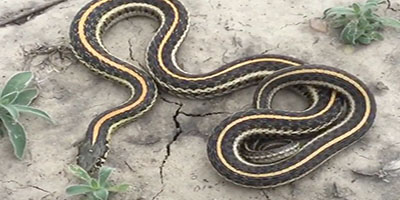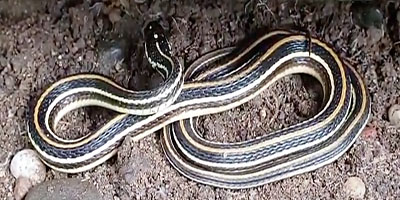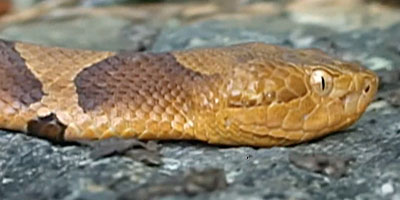
Welcome to bellinghamsnakes.com! I am David, a snake enthusiast living in Bellingham, WA. Many people don't know that Bellingham is in fact full of snakes! You just need to know where to find them - they can often be shy and elusive. Some Washington snake species are more common outside of the city limits, in different parts of Whatcom County WA, but many types of snakes are indeed common in the more urban parts of Bellingham. This guide is meant to help educate you about the beautiful snakes of Bellingham, and to help you identify the most common snakes of Bellingham, as well as the venomous snakes of Bellingham that you should learn to recognize and avoid. If you want more detail, click here for my complete list of ALL snake species in Bellingham. Remember the following:
- Most snakes of Bellingham are harmless and don't want to encounter you
- Venomous snakes exist but are uncommon in Bellingham, Washington
- Snakes eat rats and mice and are a valuable part of the Washington ecosystem
- Never kill a snake - if you leave a snake alone, it will leave you alone.
Common Snake Species in Bellingham
 Western garter snake:
Garter snakes are one of the most common snakes in the whole of North America. In Bellingham, garter snakes are very common. They are relatively small and slender snakes with adults growing between 23 and 30 inches in length. They live near water bodies such as ponds and meadows. Garter snakes are generally active during the day and sleep at night. They are very fast and are relatively good climbers.
Western garter snake:
Garter snakes are one of the most common snakes in the whole of North America. In Bellingham, garter snakes are very common. They are relatively small and slender snakes with adults growing between 23 and 30 inches in length. They live near water bodies such as ponds and meadows. Garter snakes are generally active during the day and sleep at night. They are very fast and are relatively good climbers.
Western garter snakes feed on earthworms, small fishes, frogs, and so on. They strike and immobilize their prey with a mild neurotoxin that is contained in their saliva. The neurotoxin paralyzes the prey, making it easier for the snake to swallow. Western garter snakes are non-venomous and generally nontoxic to humans. They are generally non-aggressive too and are mostly kept as pets. If threatened, they can however deliver a painful bite that can cause swelling or irritation of the skin.
 Northern ring-necked snake:
The northern ringneck snake is usually about 12 to 14 inches long, although it can grow up to 28 inches. Females are usually larger than males. It gets its name from the peculiar ring located around its neck. The ring is usually orange, cream, or yellowish in color. Its body itself is dark grey or black depending on the subspecies. Apart from the distinctive ring on its head, the rest of the body is void of markings or splotches.
Northern ring-necked snake:
The northern ringneck snake is usually about 12 to 14 inches long, although it can grow up to 28 inches. Females are usually larger than males. It gets its name from the peculiar ring located around its neck. The ring is usually orange, cream, or yellowish in color. Its body itself is dark grey or black depending on the subspecies. Apart from the distinctive ring on its head, the rest of the body is void of markings or splotches.
Northern ringneck snakes have been found all over Bellingham. They especially like forested areas, under logs or rocks, and tree barks. During the hot season, they hibernate underground. Northern ringneck snakes are nocturnal and they generally avoid people. Seeing them is therefore a very rare occurrence. Northern ring-necked snakes are partially venomous but they are not aggressive and non-threatening to humans. They mostly feed on small lizards, frogs, and earthworms. They constrict their prey partially before swallowing it whole. When threatened, it may play dead or secrete a musky odor from the corners of its mouth.
 Western ribbon snake:
The western ribbon snake is a medium-sized snake found in various parts of Bellingham. Adults measure 20 to 30 inches on average, although some may become longer. Its skin has a black background with either white or mint green colors edged in between the scales. The western ribbon snake has 3 longitudinal stripes resembling a ribbon. The color of the head is black or brown with yellow spots.
The western ribbon snake is mostly aquatic, preferring to live close to water bodies or wet areas. They can be found in ponds, rivers, lakes, marshes, etc. They are diurnal meaning that they are active throughout the day and sleep at night. Although night sightings are not uncommon. They mostly feed on fishes, frogs, salamanders, toads, and so on. They do not constrict their prey, instead they have strong jaws used in holding on and overpowering their prey. Western ribbon snakes are non-aggressive and non-venomous. When threatened, they retreat to the water.
Western ribbon snake:
The western ribbon snake is a medium-sized snake found in various parts of Bellingham. Adults measure 20 to 30 inches on average, although some may become longer. Its skin has a black background with either white or mint green colors edged in between the scales. The western ribbon snake has 3 longitudinal stripes resembling a ribbon. The color of the head is black or brown with yellow spots.
The western ribbon snake is mostly aquatic, preferring to live close to water bodies or wet areas. They can be found in ponds, rivers, lakes, marshes, etc. They are diurnal meaning that they are active throughout the day and sleep at night. Although night sightings are not uncommon. They mostly feed on fishes, frogs, salamanders, toads, and so on. They do not constrict their prey, instead they have strong jaws used in holding on and overpowering their prey. Western ribbon snakes are non-aggressive and non-venomous. When threatened, they retreat to the water.
Venomous Snake Species in Bellingham
 Western rattlesnake:
The western rattlesnake is very common in Bellingham as well as other eastern provinces in the state of Washington. It is a pit viper which is venomous. Their size can vary greatly depending on the food available. They have a distinctive rattle on their tails that makes a rattling sound when shaken.
Western rattlesnake:
The western rattlesnake is very common in Bellingham as well as other eastern provinces in the state of Washington. It is a pit viper which is venomous. Their size can vary greatly depending on the food available. They have a distinctive rattle on their tails that makes a rattling sound when shaken.
Western rattlesnakes mostly live around grasslands, mountains, and rocky environments. Although venomous, they are not aggressive and will only strike if provoked. They feed on birds, mice, and amphibians.
 Northern copperhead:
They are thick snakes with adults reaching about 2 to 3 feet in length. They are brownish with orange to copper-colored heads. Northern copperheads are selective eaters and eat mice and shrews, although they may eat frogs on rare occasions. They may remain senile for days while waiting for prey. Just like other pit vipers, northern copperheads are venomous and a bite can lead to death if left untreated. The good news is that northern copperheads are not aggressive and will only bite if provoked.
Northern copperhead:
They are thick snakes with adults reaching about 2 to 3 feet in length. They are brownish with orange to copper-colored heads. Northern copperheads are selective eaters and eat mice and shrews, although they may eat frogs on rare occasions. They may remain senile for days while waiting for prey. Just like other pit vipers, northern copperheads are venomous and a bite can lead to death if left untreated. The good news is that northern copperheads are not aggressive and will only bite if provoked. If you're unsure, you can email me a photo of the snake at info@bellinghamsnakes.com and I will email you back with the snake's species. If you found a snake skin, read my Found a Skin? page, and you can email me a photo of the skin, and I'll identify the snake for you. If you need professional Bellingham snake removal help, click my Get Help page, or see the below website sponsor I found, who provides that service.
Will Snakes Attract Other Snakes
Most reptiles are known for their solitary nature. Crowding will put too much stress on them, and the dominant serpent may act aggressively. Therefore, under normal circumstances, snakes are not usually found in a group. Therefore, if you have snakes in your area, it is unlikely that they will invite their friends to come over and take over your house. However, there are still some exceptions to this rule. For instance, some snakes can share a communal den during the winter season. Female snakes can also leave pheromones during the mating season that will draw the attention of male snakes.
Snakes Have Social Life Too
Most of us will think that snakes are cold, indifferent, and solitary creatures. However, some species of snakes can be extra friendly such as the garter snakes. They are non-venomous creatures found in the wooded areas of Costa Rica and the vast plain of Canada. However, they will have specific preferences when choosing which snake they should hang out with. Garter snakes have been observed to look for social interaction and contact. Experts observed the snakes in captivity and found out that some bolder snakes will behave like an explorer, while the one with a shy and restrained personality will rarely move. There are also recent reports wherein they found out that some snake species, like the Cuban boa, will hunt in packs.
Attracting Other Snakes with Pheromones
During the mating season, the female snake will release a pheromone that may draw the attention of the male snakes. These snakes will not use their nostril to detect the scent. Instead, they will flick their tongue to catch these particles. These chemical signals contain a lot of information about the sexual life of the snakes. The male snakes will generally be attracted to the larger receptive female. The smaller one may also release some pheromones that might attract the others but will not be ready to reproduce. Pheromones will help the male snake determine the species and gender of the snake. Some male snakes have a higher estrogen level compared to the female snakes. Therefore, it is not surprising for them to charm the female snakes.
Are Snakes Cryptic Loners?
While the idea of social interaction among snakes will be utterly different from how humans interact with one another, the reason that motivates the snakes to have social contact still baffles the experts. It will not always be related to mating or reproduction. They've pointed out that garter snakes will not even prefer the opposite sex when making friends. Nonetheless, they believe that this kind of partnership offers the snake some benefits. For instance, being in a group may discourage some predators. It may also help them exchange body heat.
Snakes are usually solitary creatures, but there are still some situations when they will attract other reptiles; for instance, during mating and winter season. If you are not comfortable with the idea of sharing your house with them, call your local wildlife removal expert.
Remember, the term is not poisonous snakes of Bellingham, it's venomous snakes of Bellingham. Poison is generally something you eat, and venom is injected into you. That said, dangerous snakes are very rare in Bellingham. The few venomous snakes of Whatcom County are rarely seen. But they are commonly misidentified, so learn about all the snake species of Bellingham in order to correctly identify them. These snakes are usually also found in the surrounding towns of Ferndale, Lynden, Blaine, Everson, Birch Bay and the surrounding areas.
Read our article about:
Understanding The Copperhead Snake: Appearance, Biology, Life Cycle, Habitat, Diet, Behavior
bellinghamsnakes.com domain and hosting costs made possible by the generous support of this sponsor:
